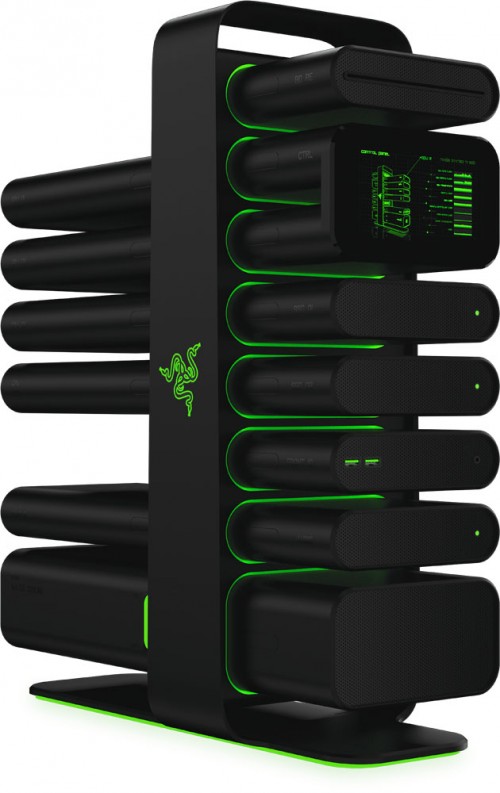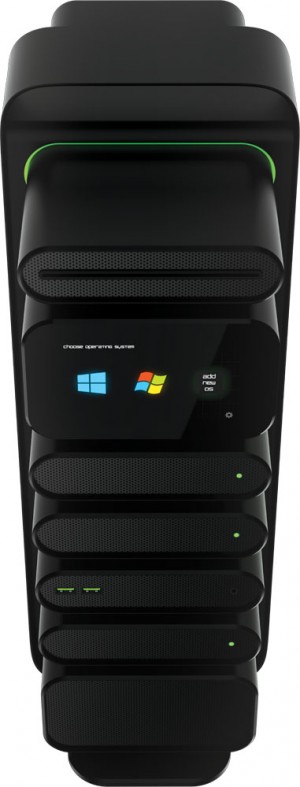- Qualcomm Launches Snapdragon 4 Gen 2 Mobile Platform
- AMD Launches Ryzen PRO 7000 Series Mobile & Desktop Platform
- Intel Launches Sleek Single-Slot Arc Pro A60 Workstation Graphics Card
- NVIDIA Announces Latest Ada Lovelace Additions: GeForce RTX 4060 Ti & RTX 4060
- Maxon Redshift With AMD Radeon GPU Rendering Support Now Available
CES 2014: Razer’s Ambitious Project Christine Aims to Bring PC Building to Non-builders
A lot of ambitious projects are announced at every CES, and Razer’s been no stranger on that front. With Project Christine, though, I think it’s safe to say that the company has just revealed its most ambitious project to date – it managed to get a genuine ‘whoa” out of me.
With Project Christine, Razer wants to give those who can’t build their own PCs the ability to do so, while being able to enjoy the ultimate in modularity. As the below shot highlights, Christine boasts some great aesthetics (a little reminiscent of Thermaltake’s Level 10), but there’s much more that makes it truly impressive.
All of the side pods seen are removable; the central pillar is what houses a pieced-out motherboard and tubing for the liquid cooling. As a user upgrades, a module could be purchased from Razer and installed with the ultimate of ease – it simply clicks in. These modules could house anything, from GPUs to CPUs to storage drives to audio cards. Sounds crazy, doesn’t it?
Razer makes it all possible with the help of tapping into the PCIe bus, but for parts that require non-PCIe connections, such as the CPU, we’d assume Razer will require it to be installed in a certain slot.
The biggest module on Christine can be seen at the bottom-left; this houses the power supply and also the bulk of the liquid cooling assembly. Unlike most liquid cooling setups, Razer’s decided to go with mineral oil here. Because a different volume of liquid would be required based on the number of modules that are installed (each of which tap into this liquid cooling), we’d assume Christine would include enough fluid to handle a module in every slot.
Another highlight of Christine is its LCD screen, which could display a variety of information, or, as the shot below shows, could allow you to choose which OS to boot into. Don’t want that Blu-ray drive seen above the screen? You don’t need it. Want some additional USB ports or a hardware button in its place? That could be done.
Given the complexities of this platform, Razer would need some undeniable consumer faith put into it in order to see it become a reality. The company had a real demo of it on display at CES, so it has proven that it can be done. One thing we know for sure: It’s going to be exclusive to those who don’t mind splurging a lot on their PC.
That all said, with its current implementation, there’s no reason to believe Christine couldn’t come to market, but there are many questions begging to get answered (eg: Where’s all that PCIe bandwidth coming from?).
Check out the official Project Christine promo video below:







